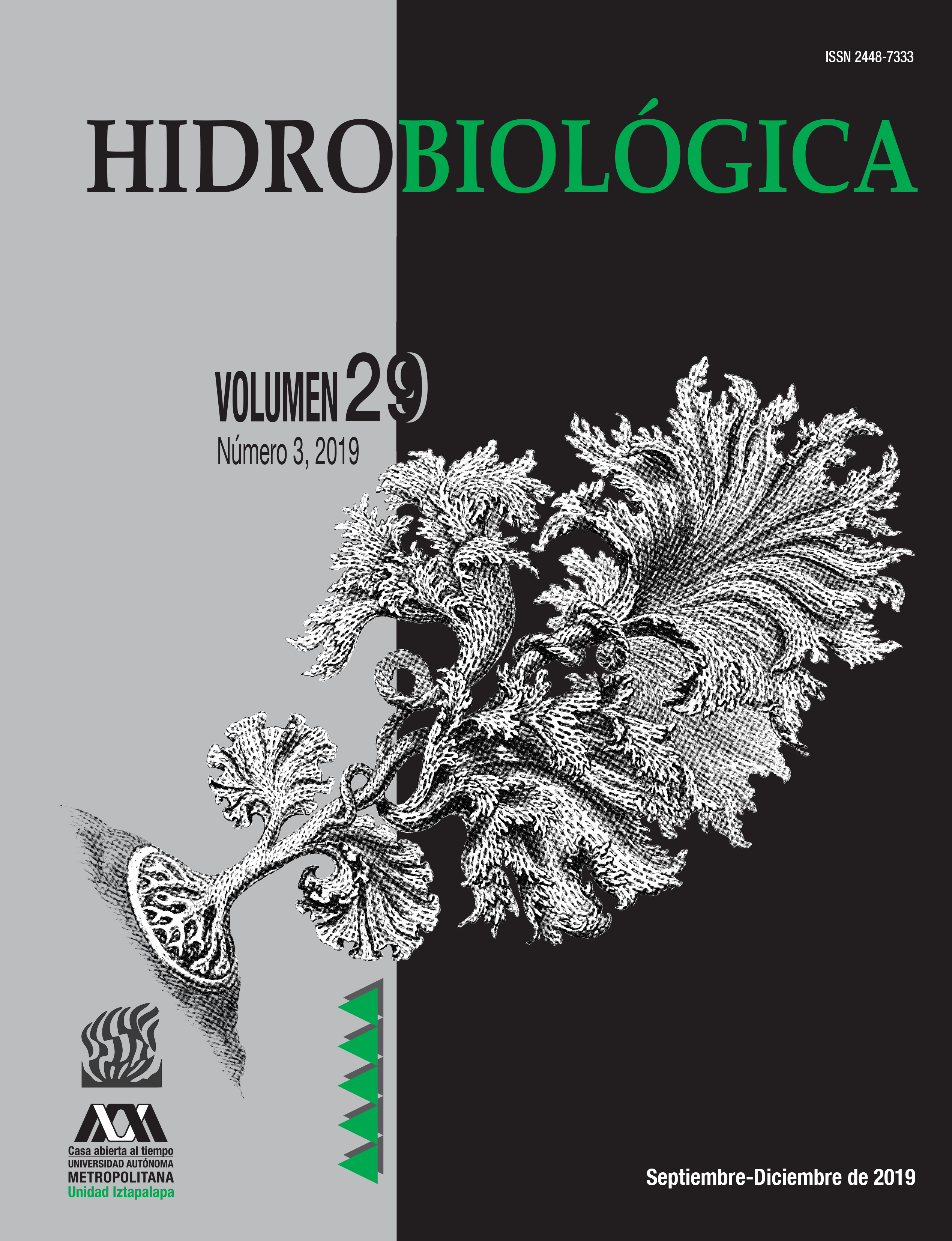Prevalence of Perkinsus sp. (Apicomplexa) in the callista clam Megapitaria squalida from the central coast of Sinaloa, Mexico
DOI:
https://doi.org/10.24275/uam/izt/dcbs/hidro/2020v29n3/GongoraKeywords:
Altata Bay, callista clam, fishing refuge, Perkinsosis, sanitary statusAbstract
Background. Different species of Perkinsus spp. have been associated to mortality of commercial mollusks. Goals. The prevalence of Perkinsus sp. in the callista clam Megapitaria squalida was evaluated monthly (June 2015 to November 2016) to determine the relationship between the infection and size of clam. Methods. 5,000 clam seeds (5.73 mm height of the shell and 0.03 g of initial weight) were placed in a fishing refuge of Altata, Sinaloa. A total of 60 specimens were collected each month to evaluate their growth and parasite prevalence. The water physicochemical parameters (temperature, salinity, pH, dissolved oxygen, depth, and transparency) and the length, height, and width of the shell and final weight of M. squalida were obtained. Results. Ray’s thioglycollate fluid medium test (MFTR) detected spherical cells (10X) of dark color indicating the presence of presumed hypnospores of Perkinsus sp. during the first 17 months of sampling. The mean infection intensity was grade 2 (mild), while the maximum prevalence was 43.33% in the months of November (2015) and March (2016), with an average of 21.05%. None of the Perkinsus sp sample (n = 112) positively detected by MFTR confirmed the presence of the protozoan. There was no correlation (p >0.05) between the prevalence of the pathogen with all the parameters studied. Conclusions. The results suggest that M. squalida is not susceptible to Perkinsus sp. The present represents the first report of Perkinsus sp. In the callista clam M. squalida.
Downloads
Downloads
Published
How to Cite
Issue
Section
License
Los autores/as que publiquen en esta revista aceptan las siguientes condiciones:
De acuerdo con la legislación de derechos de autor, HIDROBIOLÓGICA reconoce y respeta el derecho moral de los autores, así como la titularidad del derecho patrimonial, el cual será cedido a la revista para su difusión en acceso abierto.
Publicar en la revista HIDROBIOLÓGICA tiene un costo de recuperación de $500 pesos mexicanos por página en blanco y negro (aproximadamente 29 dólares americanos) y $1000 pesos por página a color (aproximadamente 58 dólares americanos).
Todos los textos publicados por HIDROBIOLÓGICA sin excepción se distribuyen amparados bajo la licencia Creative Commons 4.0Atribución-No Comercial (CC BY-NC 4.0 Internacional), que permite a terceros utilizar lo publicado siempre que mencionen la autoría del trabajo y a la primera publicación en esta revista.
Los autores/as pueden realizar otros acuerdos contractuales independientes y adicionales para la distribución no exclusiva de la versión del artículo publicado en HIDROBIOLÓGICA (por ejemplo incluirlo en un repositorio institucional o publicarlo en un libro) siempre que indiquen claramente que el trabajo se publicó por primera vez en HIDROBIOLÓGICA.
Para todo lo anterior, el o los autor(es) deben remitir el formato de Carta-Cesión de la Propiedad de los Derechos de la primera publicación debidamente requisitado y firmado por el autor(es). Este formato se puede enviar por correo electrónico en archivo pdf al correo: enlacerebvistahidrobiológica@gmail.com; rehb@xanum.uam.mx (Carta-Cesión de Propiedad de Derechos de Autor).
Esta obra está bajo una licencia de Creative Commons Reconocimiento-No Comercial 4.0 Internacional.


